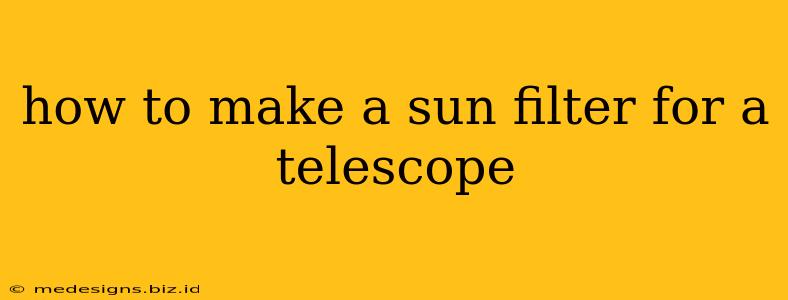Looking at the sun directly, even with a telescope, can cause serious and permanent eye damage. Never attempt to observe the sun without proper filtration. This guide explains how to create a safe and effective solar filter for your telescope. However, we strongly advise purchasing a commercially made solar filter. Improperly constructed filters can lead to severe eye injury. This information is provided for educational purposes only.
Why Commercial Filters Are Preferred
Commercially made solar filters are designed to meet specific safety standards and undergo rigorous testing. They're manufactured using materials with the correct optical density to block harmful radiation. Building your own carries significant risks. Even a small error could result in irreversible damage to your eyesight.
Understanding Solar Filtration
The sun emits intense radiation across a broad spectrum, including visible light, ultraviolet (UV), and infrared (IR) radiation. A safe solar filter must block almost all of this radiation, reducing the intensity to safe viewing levels. A neutral density filter is not enough; it only reduces the brightness, not the harmful radiation.
If You Still Choose to Build (Proceed with Extreme Caution):
We strongly reiterate: this method carries considerable risk. Improper construction can lead to blindness. If you proceed despite this warning, understand that you do so entirely at your own risk.
Materials (Potentially Dangerous - Handle with Care):
-
Black Polymer Film: This is NOT regular black plastic. You need a specialized Baader AstroSolar Safety Film or equivalent, specifically designed for solar observation. This film is designed to block harmful radiation. Do not use anything else.
-
Telescope Aperture: Measure the exact diameter of your telescope's objective lens or mirror.
Construction Steps (Proceed with Extreme Caution):
-
Measure and Cut: Carefully measure your telescope's aperture and add a few millimeters for overlap. Cut the Baader AstroSolar film to the required size. Use sharp scissors, a new blade, or a precision cutter. Any creases or imperfections will compromise the filter's safety and effectiveness.
-
Mounting: You need a sturdy frame to hold the film. This could be a custom-made cardboard or metal ring that fits snugly over the front of your telescope, ensuring the film remains taut and wrinkle-free.
-
Secure the Film: Gently attach the film to the frame. Secure it meticulously to avoid any gaps or wrinkles. Consider using a thin adhesive that won't harm the film.
-
Testing (Extremely Important): Before observing, test the filter using a simple method. Project the sun's image onto a white card using your telescope. The projected image should be a dim, safe to look at. If you see a bright image, do not use this filter, as it’s not safe.
Safe Solar Viewing Practices
- Never look directly at the sun without a proper filter.
- Always supervise children using a solar filter.
- Regularly inspect your filter for any damage. Discard immediately if any damage is detected.
- Use a solar filter specifically designed for telescopes.
- Consider observing solar prominences with a hydrogen-alpha telescope instead of a white-light filter.
Disclaimer: This information is for educational purposes only. The author and publisher are not liable for any injury or damage resulting from attempting to construct a solar filter. Always prioritize your safety and purchase a commercially made solar filter.
